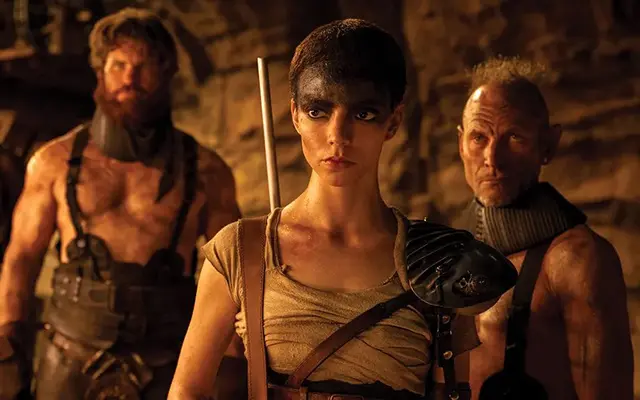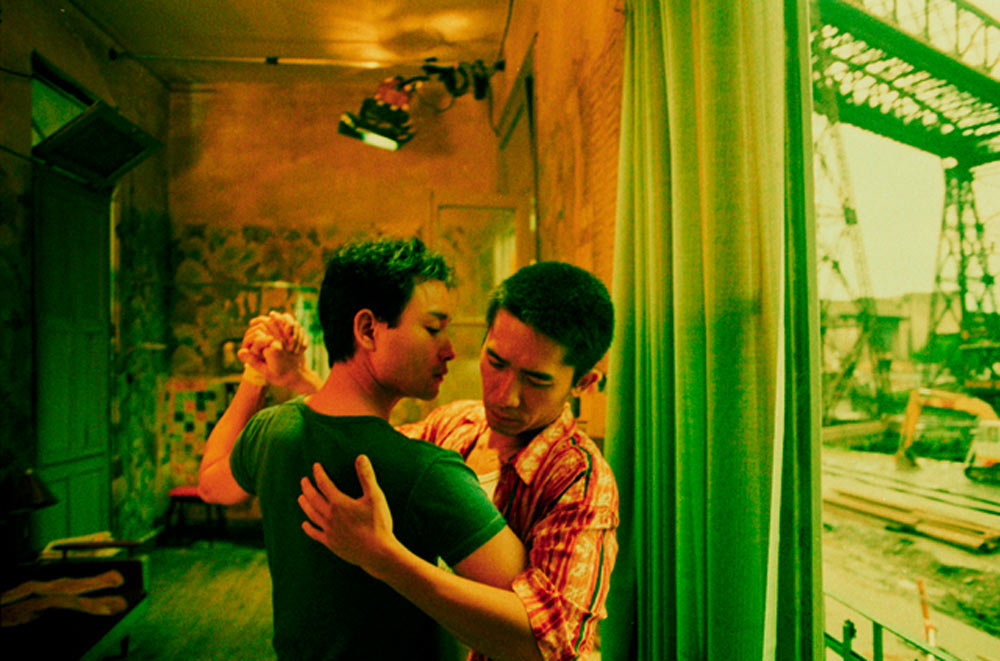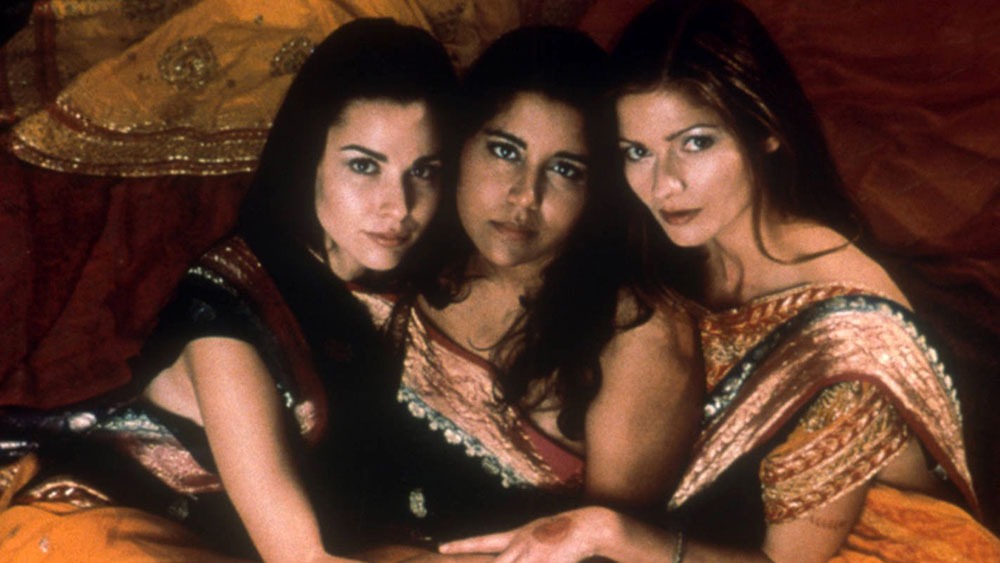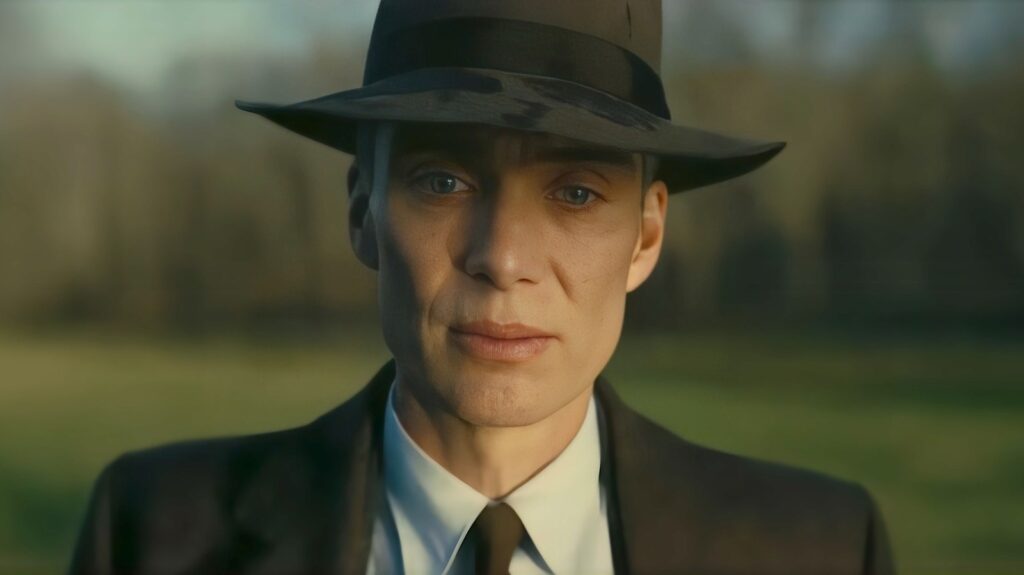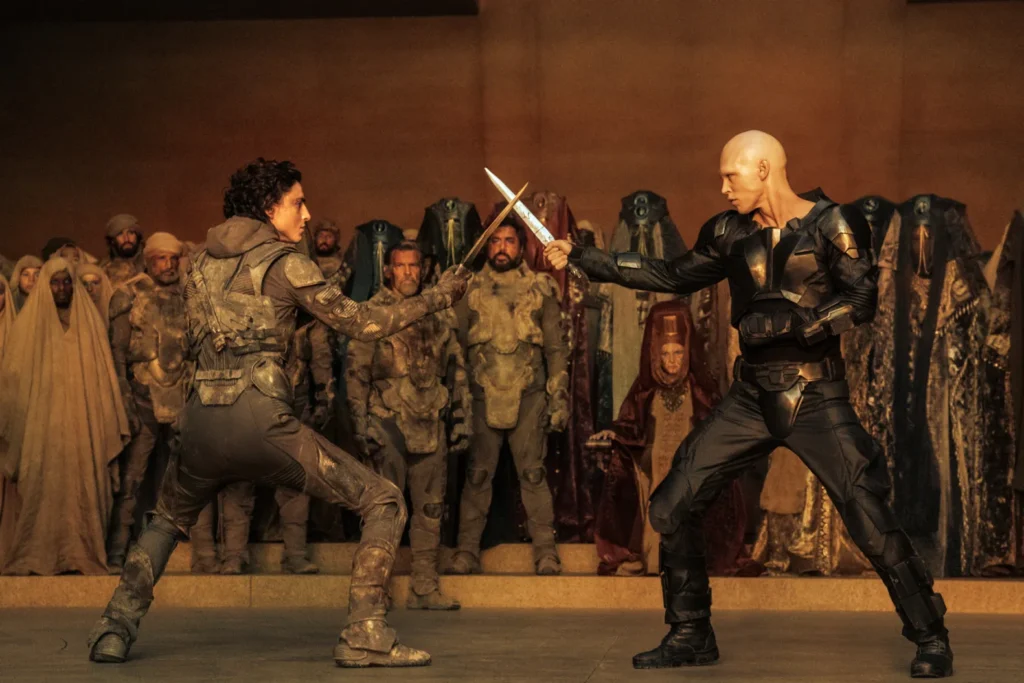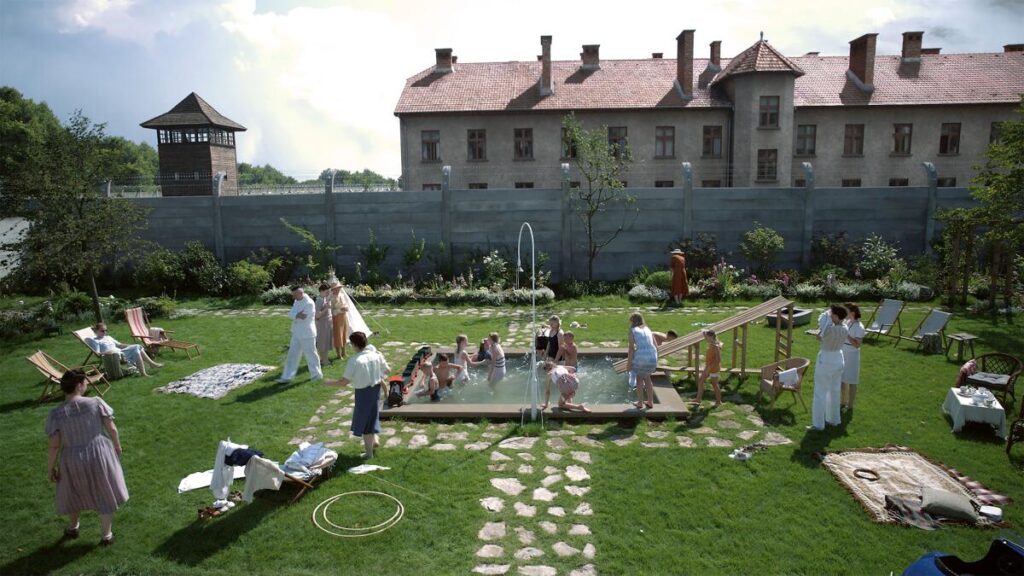Stereophonic presents a grounded take on the messy nature of greatness in motion
Written by Ian Thomas Malone, Posted in Blog, Movie Reviews, Pop Culture, Reviews
There is a certain temptation to glorify the antics of so-called tortured geniuses who produce great art while turning the lives of everyone around them into complete hell. Truly moving work is so sparse across the narrow confines of capitalism that those capable of making it are often forgiven for their shortcomings. The consumer only views the landscape through its finished product, not the countless hours it took to arrive at such a destination.
The play Stereophonic is a treatise on the ugliness of beauty. Based heavily off the turmoil of Fleetwood Mac, the show centers around a five person band and their two sound engineers as they attempt to record a follow-up to build on their growing success. Peter (Tom Pecinka), the singer, guitarist and relative newcomer to the group, takes lead on producing the album, butting heads with drummer and group leader Simon (Chris Stack) and bassist Reg (Will Brill), who is in a dysfunctional decaying relationship with keyboardist Holly (Juliana Canfield). Peter’s own longtime relationship with singer Diana (Sarah Pidgeon) runs into its own problems when Diana starts to come into herself as a songwriter, challenging Peter’s stranglehold on the group.
The three-hour show takes place entirely on a single set, a recording studio with a live room upstage, complete with a glass barrier where the band performs real music. Two engineers, Grover (Eli Gelb) and Charlie (Andrew R. Butler) supervise the production from a center console, often providing comedy in the quieter parts of the play. The music is largely confined to the first act, only comprising about twenty minutes of the runtime, but sound plays a major role in the narrative, particularly when the band is separated from the audience from behind the glass, requiring the actors to communicate their sheer disgust for each other through gestures and facial expressions.
Where Stereophonic achieves its greatest success is through its deconstruction of the creative process, particularly the tedious monotony that often consumes the space between moments of genuine inspiration. A band can sit in a studio for fourteen hours doing nothing but engaging in drugs and idle chitchat, only to find the magic in the dead of night for a few moments until everyone comes back to earth, just as a writer can sit at their desk for hours on end procrastinating in an idle search for twenty unadulterated minutes of glory. Great art makes you feel alive. Making art is often a painful negotiation between the soul and its obligations to earn a living.
Artists often produce their best work when their backs are up against the wall, because they have nothing to lose. Success provides the individual with a much more tangible sense of what can be gained, if one could only figure out how to set ego aside and learn to work on a schedule. Artists are drawn to their work often because it’s the only thing they’re good at, but a balanced existence cannot be achieved through songs or words alone. A career can provide the fruits for a happy existence, but you can’t build a life off work alone. Creative genius may leave a powerful legacy, but life is a daily grind, hardly a three act structure.
Life is a team game. No work designed to be consumed by the masses exists in a vacuum, without the aid of editors, engineers, or other collaborators. The tendency to glorify the artistic tyrant comes from a place of acknowledging that there is often a hierarchy to the creative process. Just because a guitarist has a harder job than a bassist does not mean that the bassist doesn’t have anything to contribute. Greatness can in fact be achieved without stomping over everyone along the way.
Playwright David Adjmi crafted a remarkably balanced portrayal of greatness in motion. Will Butler, best known for his work with Arcade Fire, did a wonderful job with the music, blending the seventies-era melodies of Fleetwood Mac with his own indie trappings. The runtime absolutely flies by, an emotionally intense journey that makes plenty of space for quieter moments.
It’s rare to find art that achieves greatness while never losing sight that greatness is not some pedestal to structure one’s entire existence around. The Tony Award for Best Play was well-deserved, an immensely rewarding odyssey that gives all seven of its actors a chance to shine. For a show that leans as heavily on another artist’s legacy as Stereophonic does, the play displays great maturity in its restraint toward romanticizing the messiness that often defines genius in conflict with itself and everything around it. Artistic tyranny may find lightning in a bottle, but life is a day-to-day game.






